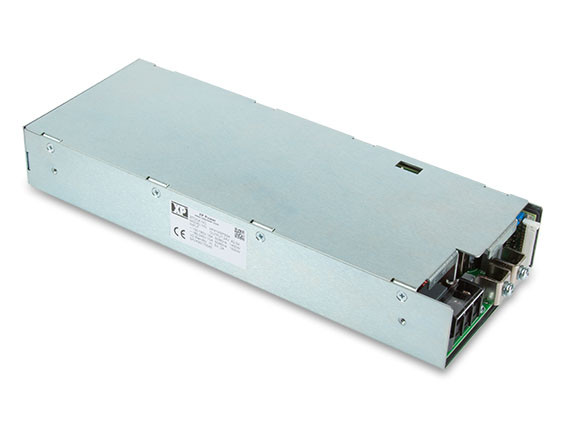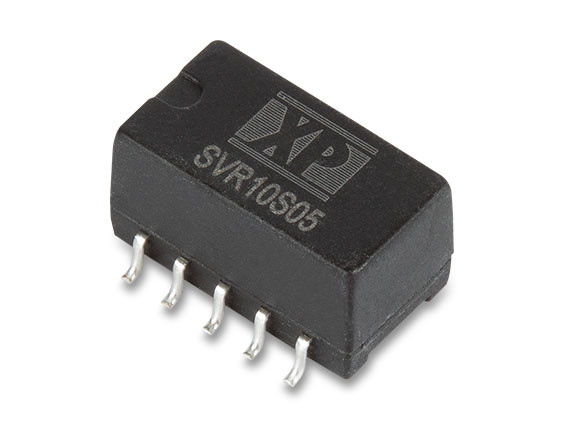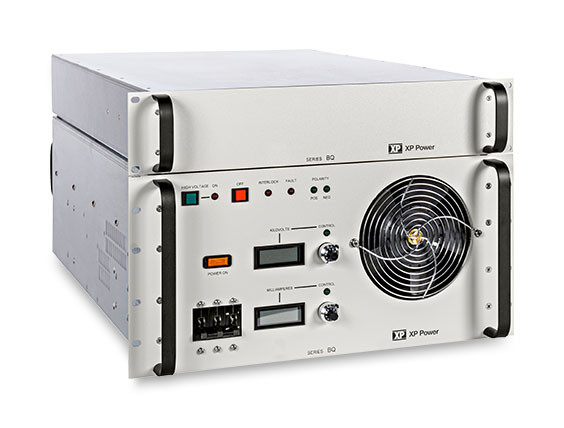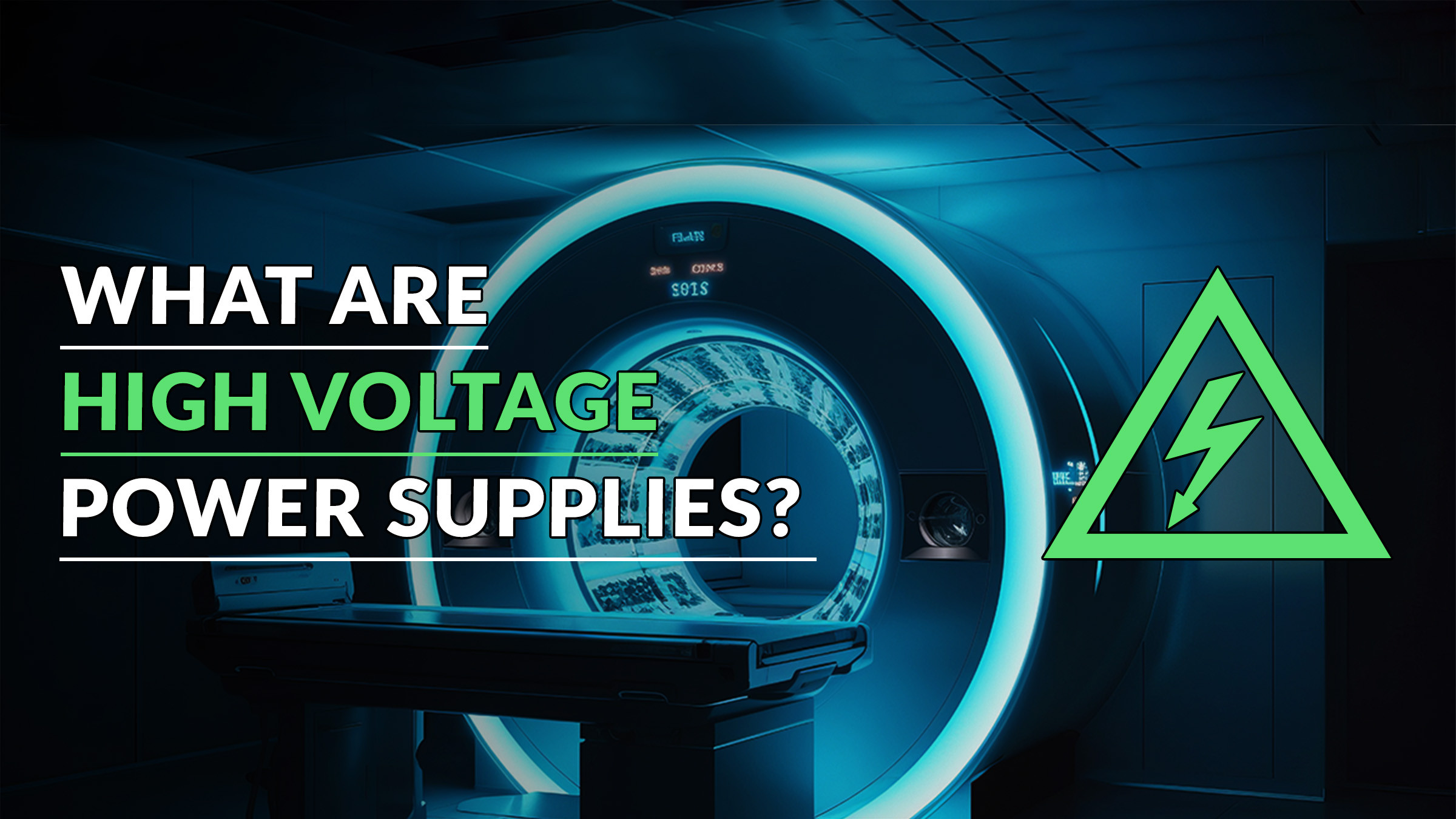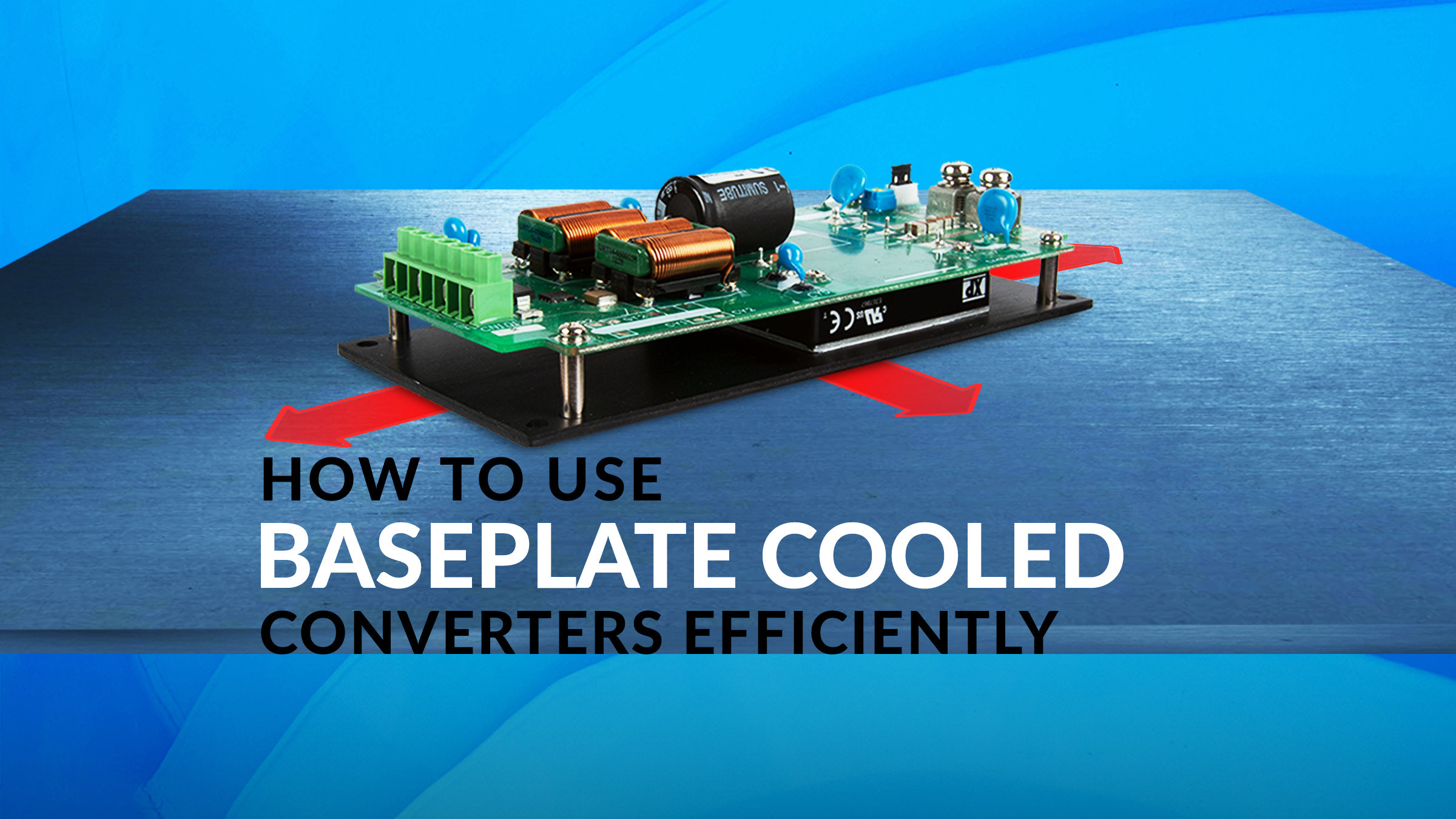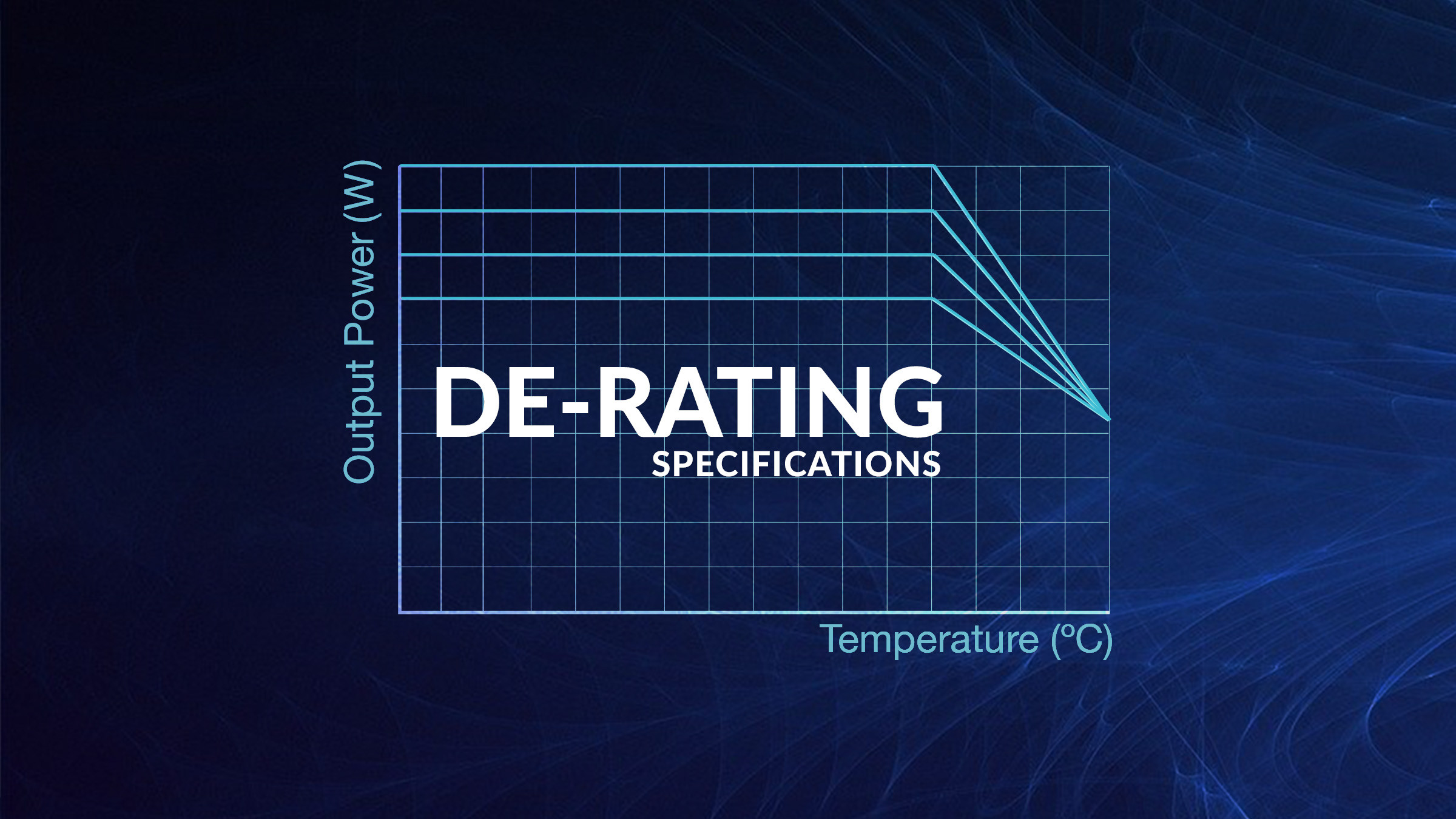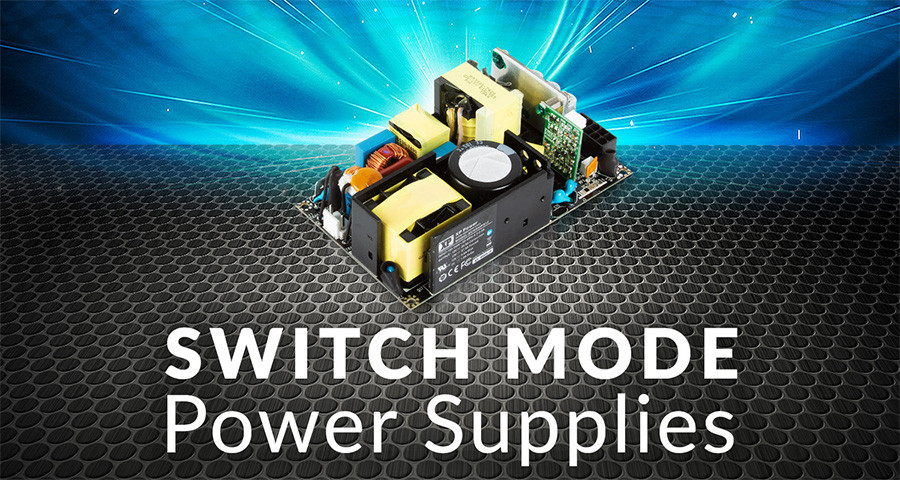
Switching power supplies - just how far have we come?
I recently had lunch with a customer XP Power has worked with since the late 1990s. We’ve seen a lot of change in that time and, as the main course arrived, we started talking about how switching power supply technology has advanced over the years. This has been most noticeable in the areas of efficiency and power density.
The first-ever unit he designed using XP Power was a 3 x 5" 40W PSU. That might have been considered revolutionary at the time but when you consider that his most recent product used a 350W unit in the same space envelope, it becomes clear just how far we’ve come.
Technological advancement
I’ve done a little research on this following our working lunch and, as far as I can tell, the very first switch-mode power supplies were designed in 1958 by IBM. They were based on vacuum tube technology. Several patents were filed for a ‘transistor oscillation’ by General Motors Corporation around the same time.
With this influx of technological advancement, designers were suddenly able to pick and choose from multiple components and multiple manufacturers, giving them an unprecedented number of options and potentially groundbreaking designs.
The focus of this intensive period of development was the traditional linear regulator – the brightest minds were trying to figure out how they could replace the outdated transformer and resistance method of changing input voltage with a more efficient design.
The idea they landed on used a transistor to chop the input voltage up with an average value less than the initial input (we have a fantastic store of technical articles here on the site if you’d like a more detailed description of SMPS operation).
With higher efficiency and fewer magnetic materials required, the new technology was smaller, lighter and generated less heat. As with modern inventions with those characteristics, this 1950s solution was hugely appealing to businesses in a range of sectors – from electronics to aerospace and communications to computing, there was a flood of early adopters each jockeying to make the best use of this new power supply technology.
Calculating power
Over the next few years, a flurry of patents and designs emerged - many of which we still use today. In 1972, Hewlett Packard used a switching power supply in its first pocket calculator. 1976 saw the first patent to use the term switch mode power supply (SMPS) filed.
HP’s calculator was really a computer – albeit in a slightly different format than we know it today. Back then, the original design weighed over 40lbs. The SMPS was used in the design to save both space and weight, marking the first step toward the ultra-slim and incredibly light computers, laptops, and tablets we use today. Similarly, aerospace manufacturers considering how they could save weight and space also began looking toward custom switching power supplies to create much more efficient designs.
Cooling off in the '70s and '80s
The 1970s was a busy decade once the initial breakthrough had been made and innovation continued at a very respectable pace. Several companies in UK, USA, and Japan began to market switching mode power supply products. To this day, there are around a dozen companies who claim to have been the first to design and market a switching power supply successfully – so we won’t go there!
The electronics magazines of the era featured articles and adverts for SMPS. The leader at that time was Boschert Inc., an American corporation that started in California. It replaced linear printer power supplies with switch mode designs. This company grew to over 1000 people, with a vast product range of open frame, cased and modular power supplies. It was eventually acquired by Computer Products Inc in the mid-80s.
Apple first introduced a switch-mode power supply into the Apple II computer in the 1970s. This small, highly efficient technology meant Apple could build a smaller, lighter computer without a cooling fan.
This type of convection cooled design was unique at the time. The technology had taken on a life of its own and was used in dozens of consumer applications. IBM PC power supplies also made the move to switch mode, albeit with cooling fans similar to the ones they use in ATX style power supplies today.
In the late 1980s and early part of the 1990s, we were stunned when the industry standard 3 x 5” switching power supplies became available with an auto-ranging input that sensed whether it was connected to 120VAC or 230VAC and adjusted accordingly. These products had powers of 25 – 40W or 1.66 to 2.66W/In2
EU emissions shakeup
As more and more companies entered the market, some loose industry standards appeared around common sizes like 3x5”. Power densities began to improve as advances in magnetics, switching transistors and controller ICs progressed. These changes offered higher efficiencies and made better power densities possible.
By the early 90’s the W/In2 available from multiple sources had more than doubled.
The EU stepped in with new legislation and Union-wide directives that meant that more focus was placed on EMC emissions and the power factor of switching power supplies. Essentially as more and more products used the technology, there was more need to control electrical interference. Issues with the sizing of the conductors needed to deliver the power to where it was needed in the grid also played their part.
The EU legislation was particularly disruptive to the SMPS market as switching technology is much noisier than linear power supplies. Additional circuitry was also needed to shape the input current waveforms to sinusoidal forms – this allowed them to meet the power factor requirement and prevent excess harmonics causing problems with the grid supply.
Today's power menu
So where are we today in terms of power density? Well, the customer I had lunch with just approved our latest 350W 3x5” switching power supply with a power density of 23 W/In2. This is more than 10 times the power of the first power supply he bought from me.
What’s interesting is that thanks to the commercialization of advanced power supply technology, higher volumes, and low-cost Asian manufacturing, this product is available at a very similar price point to the earlier 40W units.
FAQs
What is a switching power supply?
A switching power supply is an electronic power supply that utilizes a switching regulator to efficiently convert electrical power. It does so by transferring power from a DC or AC source to DC loads, like a PC battery, while converting voltage and current characteristics.
An SMPS provides electronic isolation by keeping the low voltage equipment separated from the higher mains voltage, and regulates the output voltage and output current. This keeps voltage constant and prevents short circuits from damaging the power supply and other equipment.
How are switched power supplies configured?
The three main topologies used in switching power supplies are buck (also known as forward), boost, and buck boost (alternatively called flyback). All of them utilize the same three elements (transistor, inductor, and diode) but they are arranged in unique ways.
The major difference between the three topologies is that the buck’s output voltage is lower than its input, the boost’s output voltage is higher than its input, and the flyback can have an output voltage either higher or lower than its input, but inversed in polarity.
For a more detailed guide to switching power supply configuration, please see our guide on the topic.
What are the advantages of a switched power supply?
Among the main advantages of switched power supplies are:
- Compactness - Being able to shrink the supplies is essential for the many modern electronic devices that lack space.
- High efficiency - Most switched power supplies have efficiency levels of between 80-95%.
- Flexible applications - Extra windings can be added to a switching power supply to provide multiple output voltages.
What is the difference between a switching power supply and a linear power supply?
A switching power supply uses high-frequency switching to transfer power, meaning a large amount can be transferred from a small, light power supply.
Conversely, the low frequency of a linear power supply means more power must be transferred during each main cycle for any required output. As a result, the transformer is usually a lot larger and heavier.
Do I need a switching power supply?
SMPS is used for supplying power to various types of low voltage equipment, from PCs and phone chargers to medical test devices and lighting.
If you need an electronic power supply that’s small and efficient, a switching power supply could be the solution.
Please contact our team of power solution experts for more details on how our products can help you.
